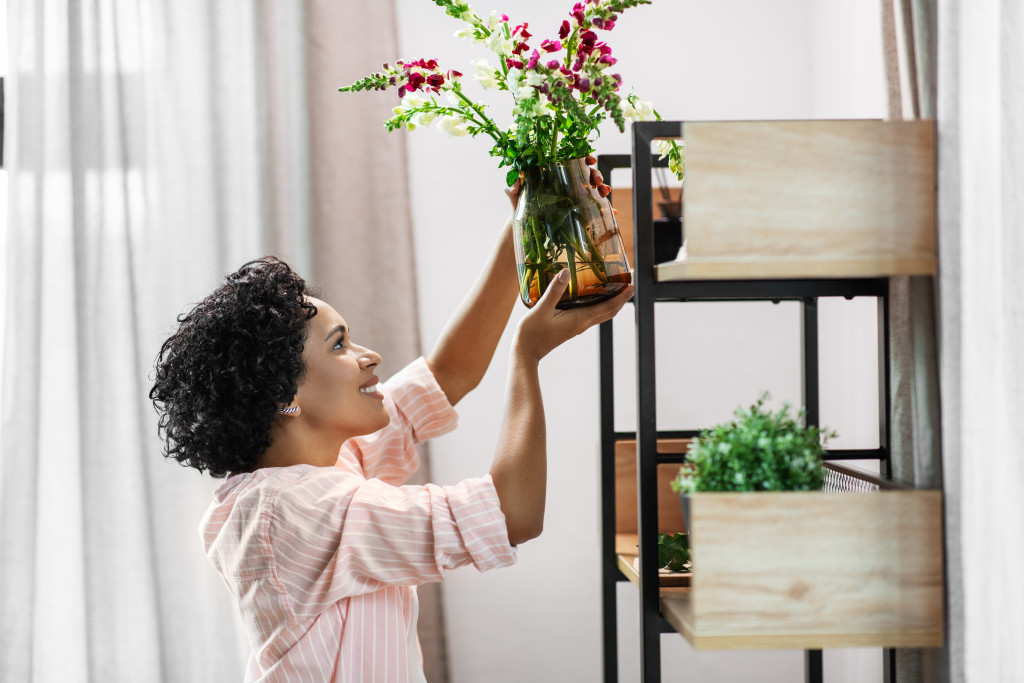When the pandemic hit, many people have become very busy exploring new hobbies at home. Some have taken up cooking, while others have decided to get into arts and crafts. Meanwhile, some got to become green thumbs seemingly overnight. And since people were told to stay indoors, growing plants inside their homes has become one of the most popular hobbies.
Indoor plants are a great way to add some life to your home and can help improve indoor air quality. They can also help purify the air and help you relax, among other things. These things are just numerous benefits of taking care of indoor plants. This is why people have become more and more interested in becoming plant parents.
However, taking care of plants is not as easy as it seems. They require time, effort, and, most importantly, knowledge. You need to know many things about taking care of plants before you can start doing it yourself. This is why we have put together a list of tips you can use if you’re new to taking care of indoor plants.
1. Know which plants are best for beginners.
If you’re new to taking care of indoor plants, starting with something low-maintenance is best. These plants are also good for those who are forgetful or don’t have much time on their hands. This way, you won’t be too overwhelmed, and you can learn the ropes without too much stress.
Some of the best indoor plants for beginners include snake plants, pothos, aloe vera, rubber plants, and philodendrons. These plants are known to be very hardy and can survive even if you give little attention to them. Taking care of these indoor plants might be helpful for you to get used to the whole process before moving on to other, more delicate plants.
Choosing the right indoor plants to take care of is important, especially if you’re new to plant parenting. It can give you an idea of what to expect when you take care of plants and help you decide whether this is something you would like to pursue in the long run.
2. Place your plants in the right spot.
Once you have chosen your plants, the next step is to find the perfect spot for them inside your home. It’s important to know that each plant has different light requirements. Some need direct sunlight, while some prefer low-light or indirect sunlight. Some can survive in both.
A solarium or a south-facing window is the best spot for plants that need direct sunlight. The perfect sunroom designer for your needs can help you with this if you don’t have a window that faces this direction. They can make a solarium that would be a perfect habitat for some of your indoor plants. Meanwhile, those that prefer low-light can be placed in an east or west-facing window. Those who survive in both types of lighting can be placed in a north-facing window.
Once you have chosen the right spot for your plants, keep an eye on them. Some plants may start to lean. It’s important to place your plants in the right spot because this can affect their growth. Knowing where to place your plants is one of the most basic but important things you need to know when taking care of indoor plants.

3. Make sure you have the right pots and soil.
The next step is to choose the right pots and soil for your plants. There are different types of pots that you can choose from. The most common ones are plastic, terra cotta, and ceramic. Each type of pot has its own advantages and disadvantages.
As for the soil, make sure you use potting mix instead of garden soil. Potting mix is lighter and has better drainage. It’s also easier to control the amount of water and fertilizer your plants get. This is important because too much or too little of either can kill your plants.
4. Be careful with watering.
Overwatering is one of the most common mistakes people make when caring for plants. This is one of the leading causes of plant death. Water is essential for plants, but too much of it can do more harm than good.
When watering your plants, make sure to check the soil first. Stick your finger about an inch into the soil and see if it’s dry or moist. If it’s dry, then it’s time to water. If it’s still moist, then wait for a few more days.
It’s also important to water your plants early in the morning or later in the evening. This is to make sure that the water doesn’t evaporate too quickly. Watering your plants in the afternoon can do more harm than good because the sun will cause the water to evaporate quickly, leaving your plants vulnerable to drought stress.
5. Inspect your plants regularly for pests and diseases.
Even if you take good care of your plants, they can still get pests and diseases. This is why it’s important to inspect them regularly. Aphids, mealybugs, spider mites, and whiteflies are the most common pests that affect indoor plants. As for diseases, some of the most common ones are root rot, leaf spot, and powdery mildew.
Take immediate action if you notice any of these pests or diseases on your plants. There are a variety of ways to get rid of them. You can use chemical pesticides, or you can go for natural methods like using neem oil or soap water spray.
Taking care of indoor plants can be a very rewarding experience. Not only will you enjoy the many benefits they offer, but you will also get a sense of satisfaction from being able to take care of them successfully. And as with anything else, taking care of plants requires knowledge and effort. As long as you’re willing to learn and put in the work, you can do it.



